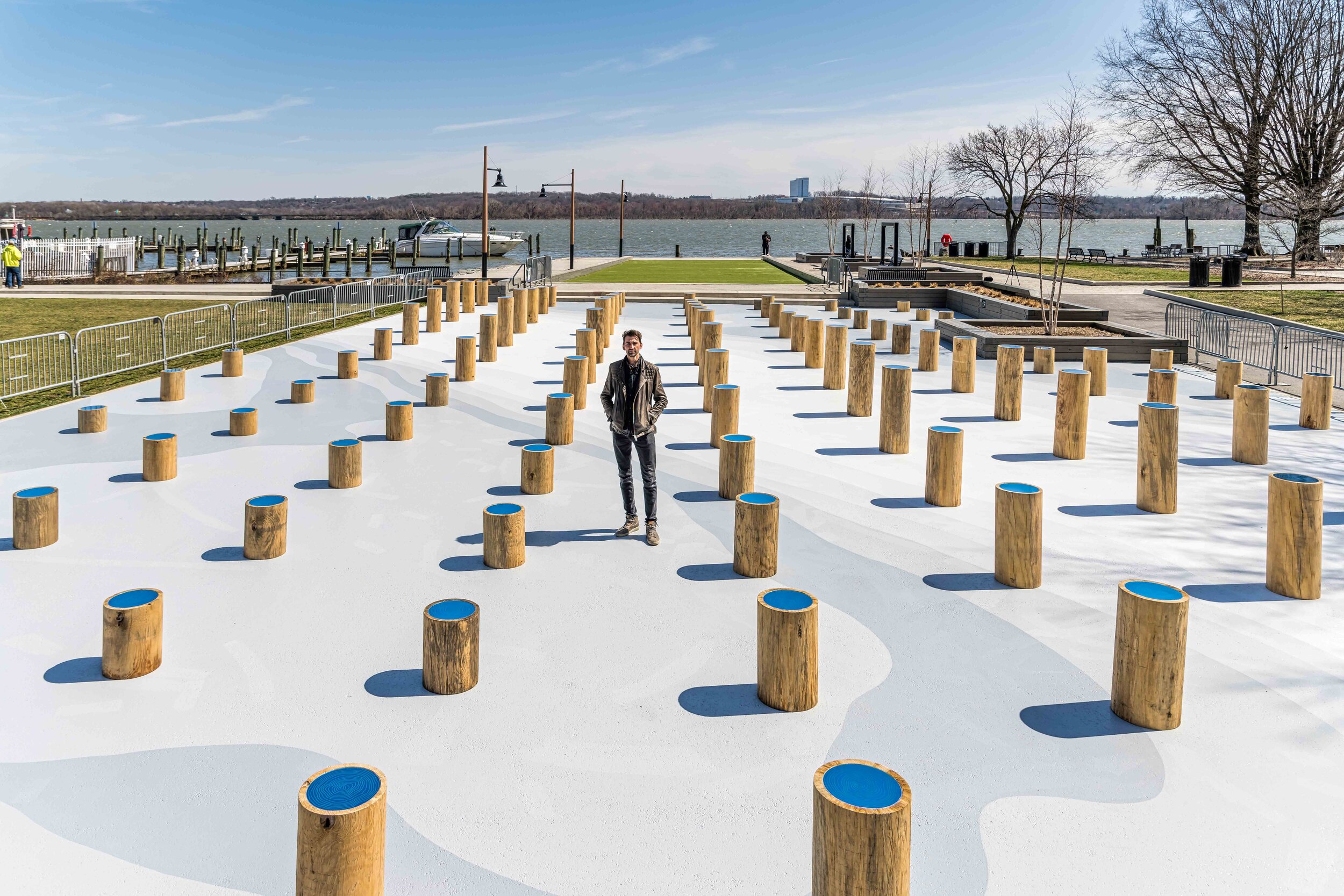
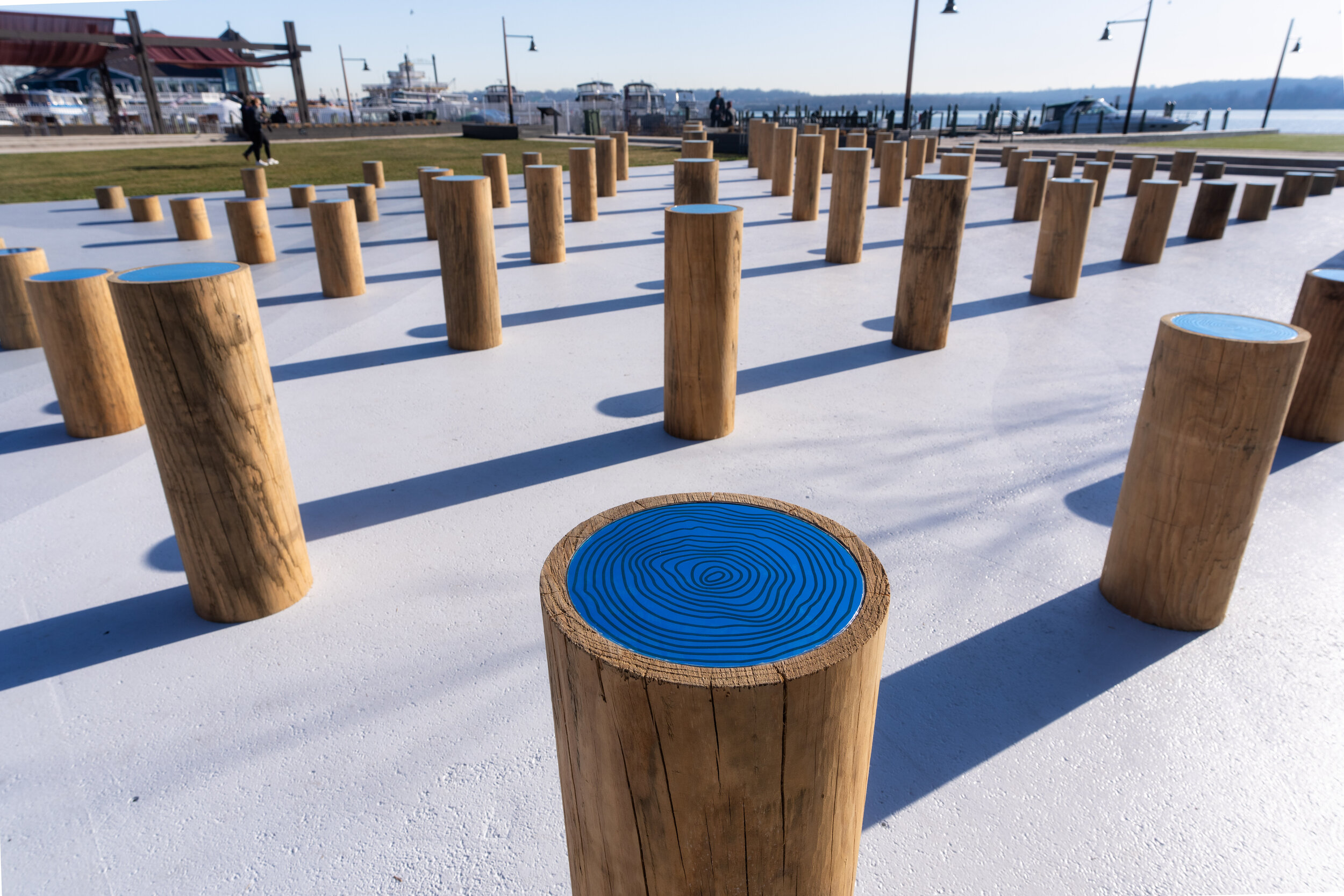
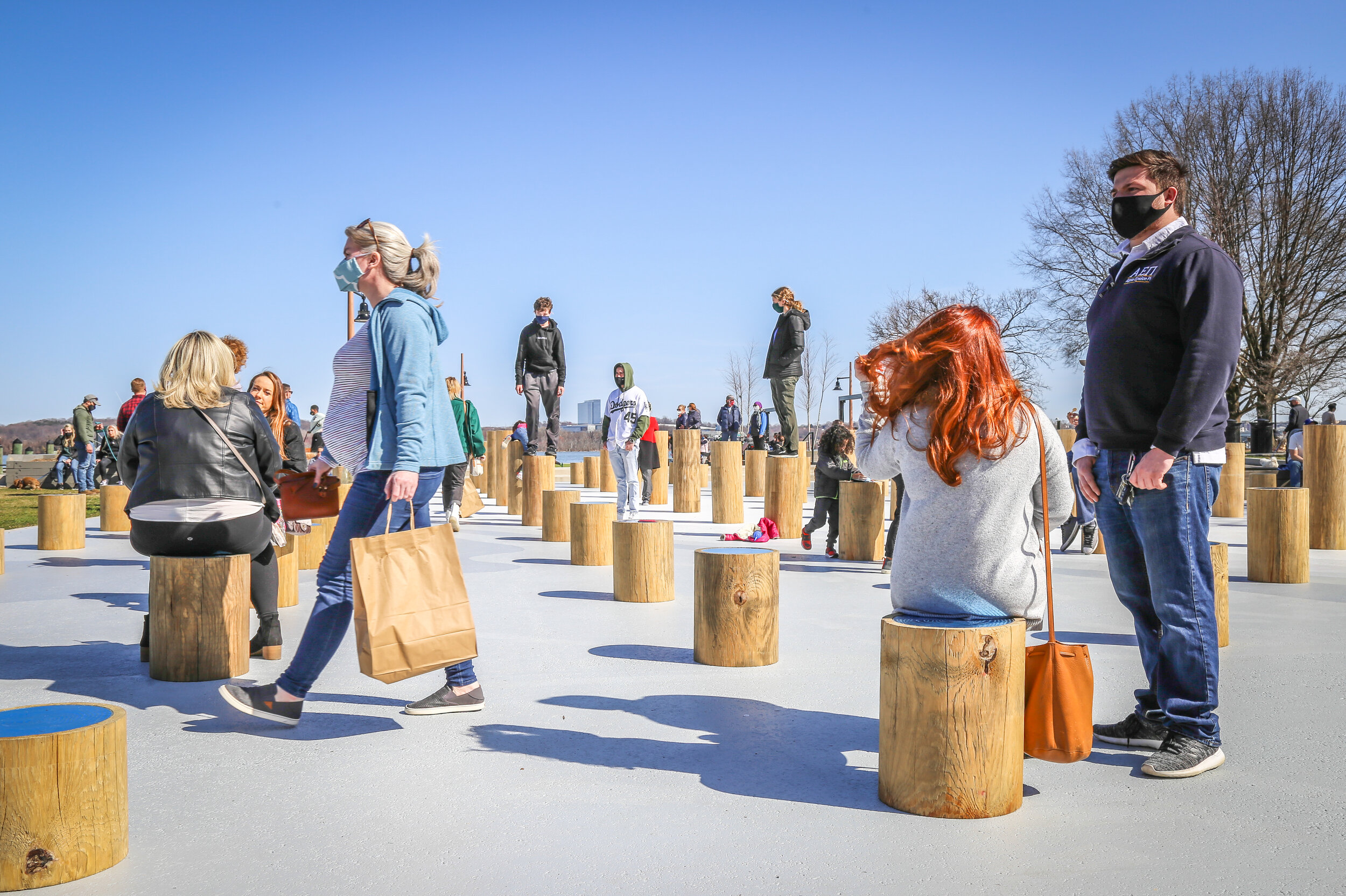



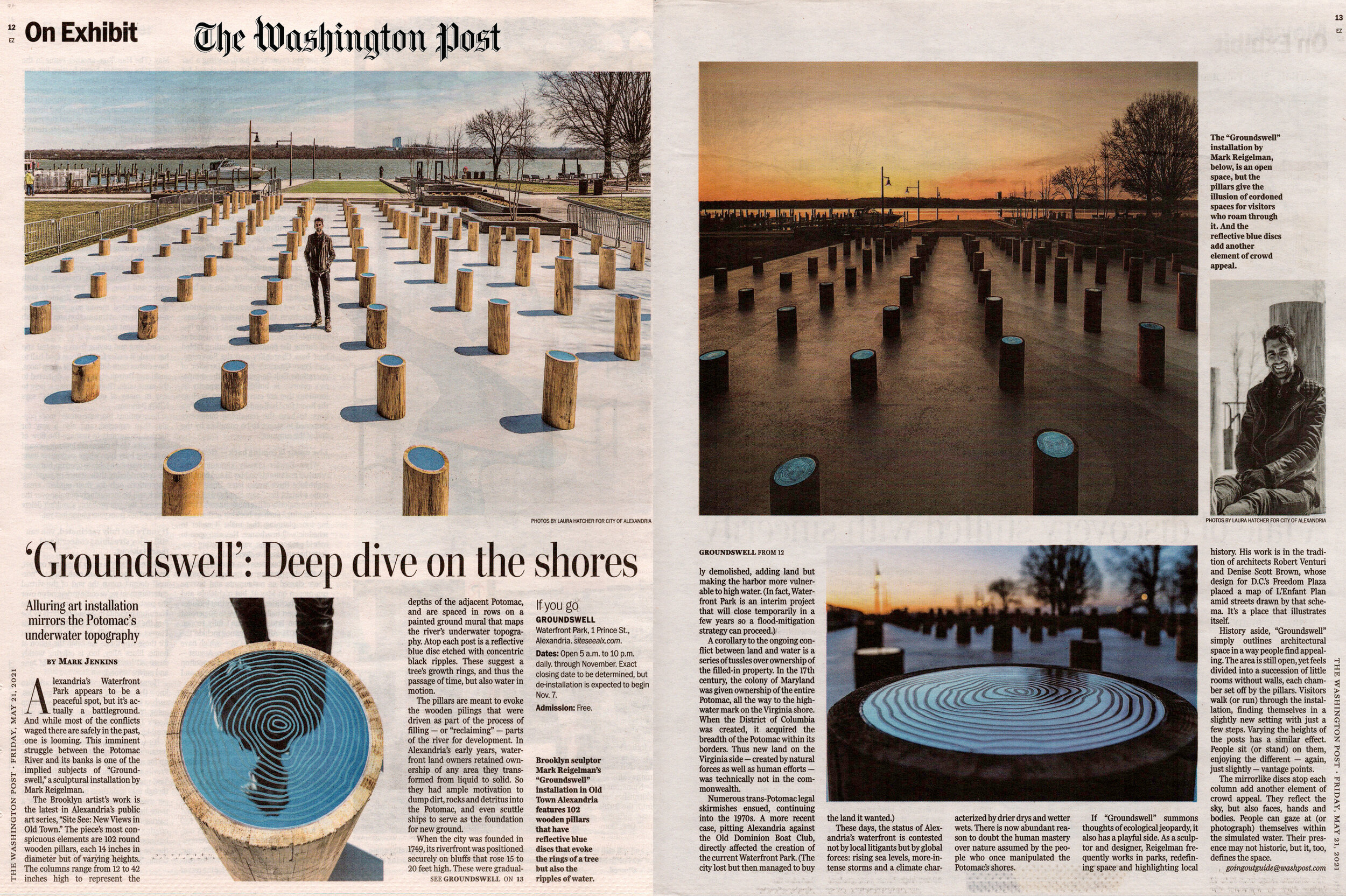
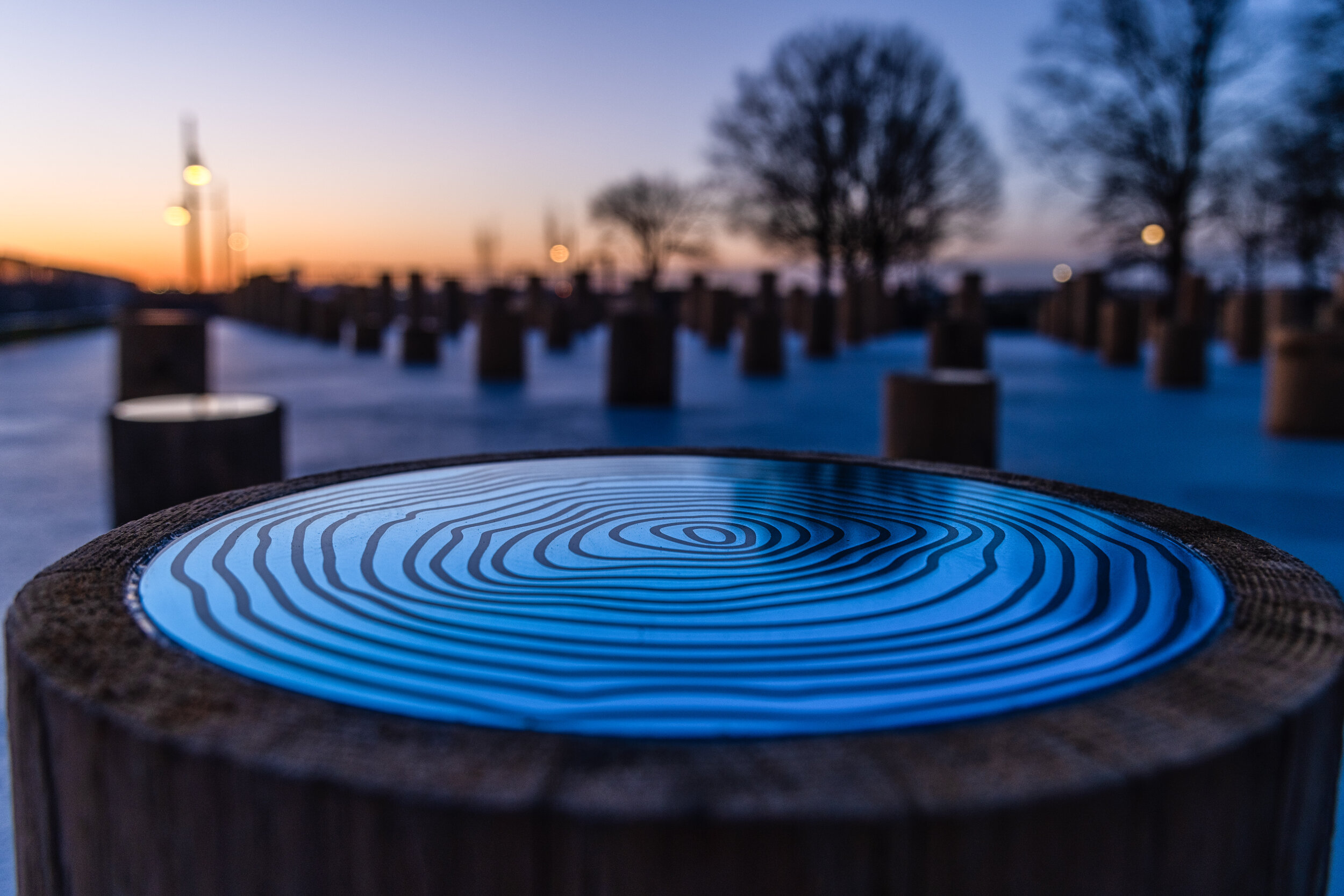


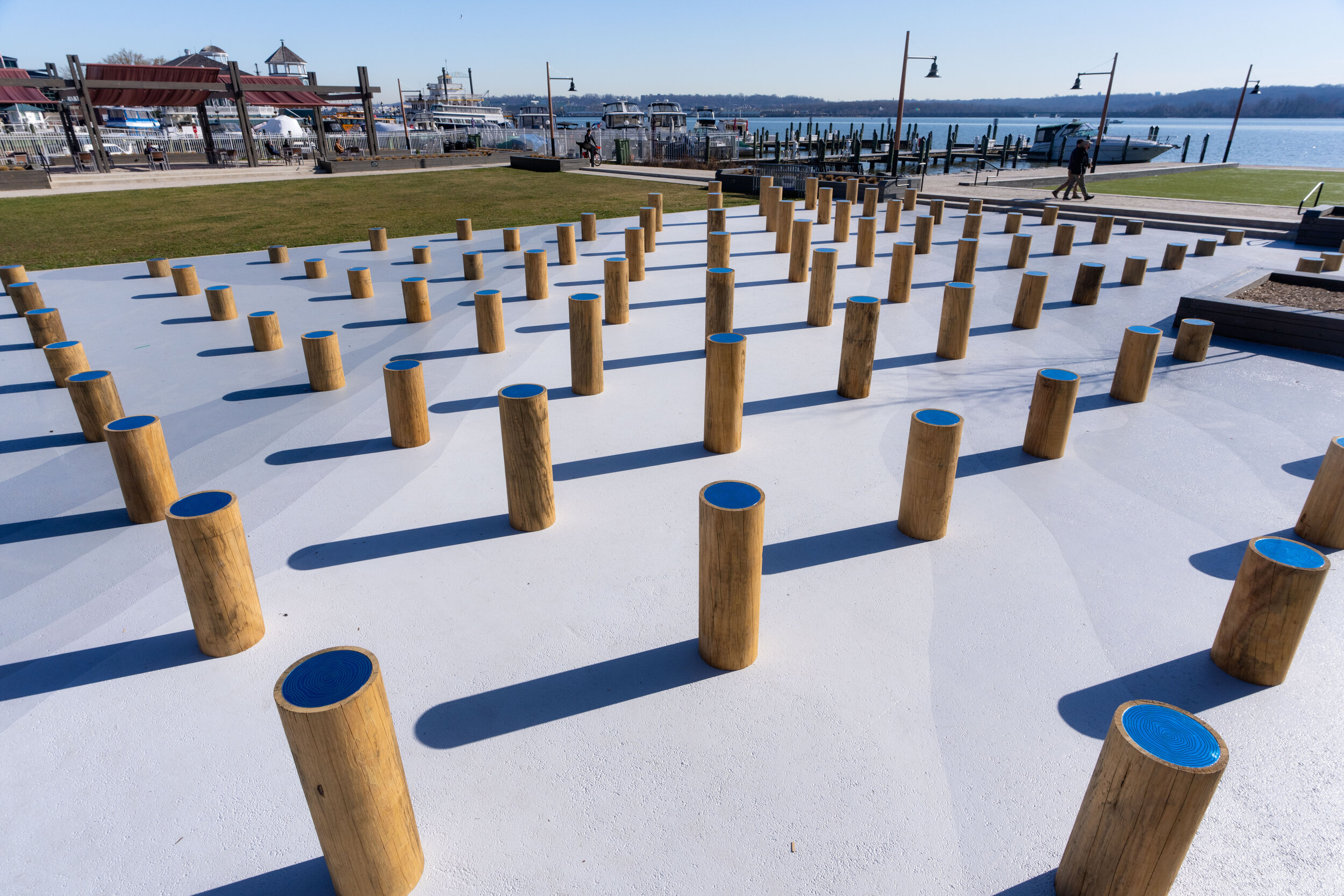

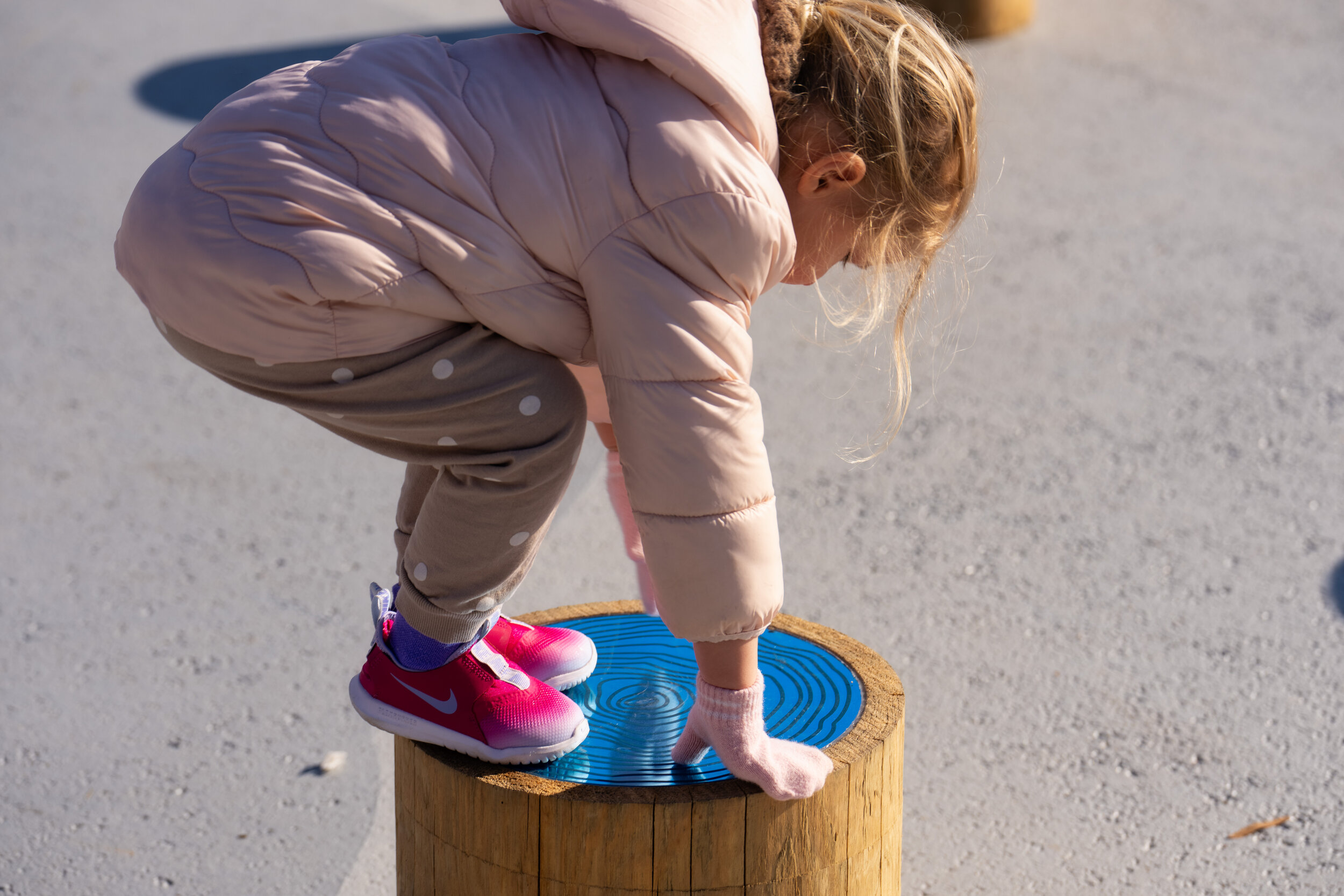
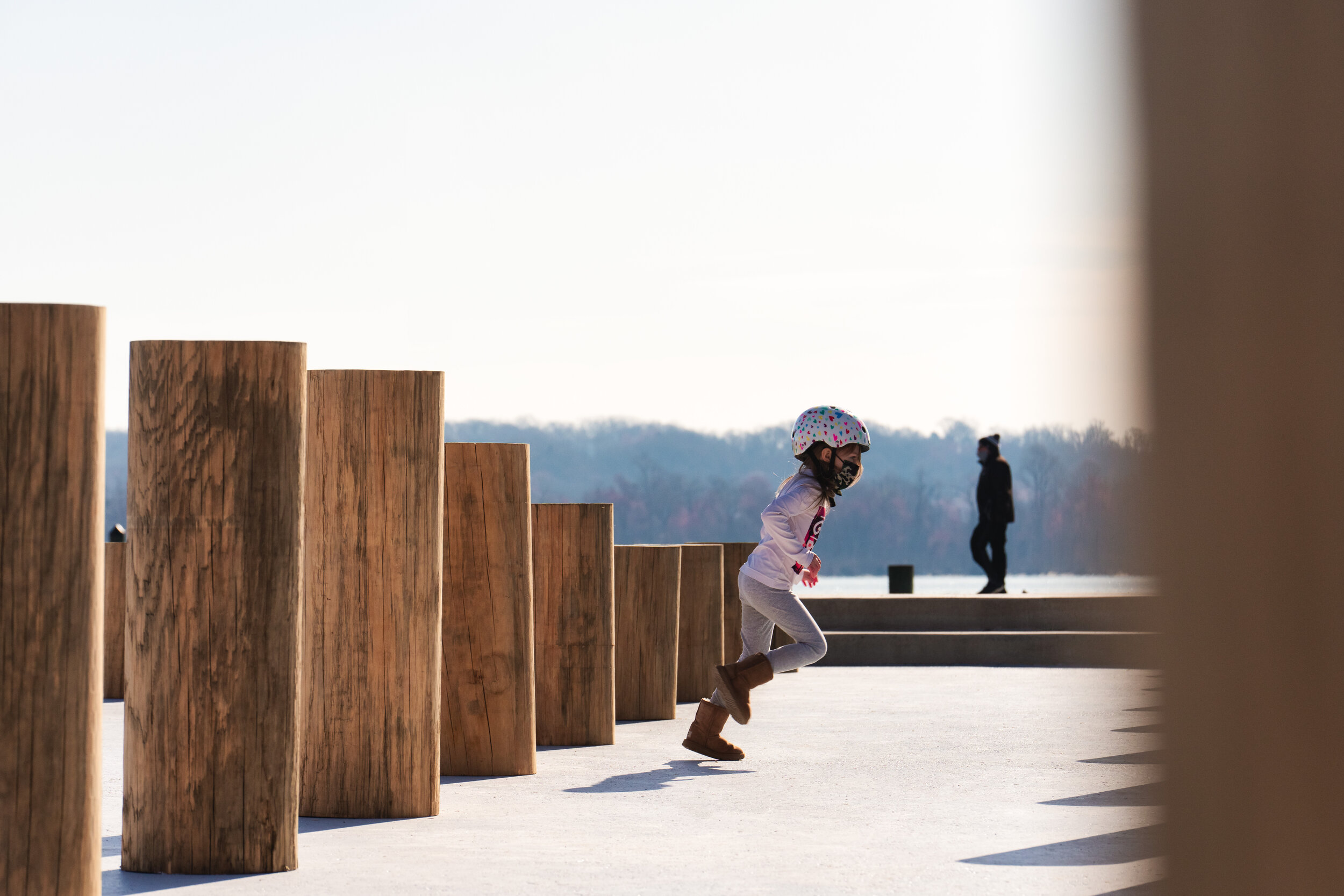





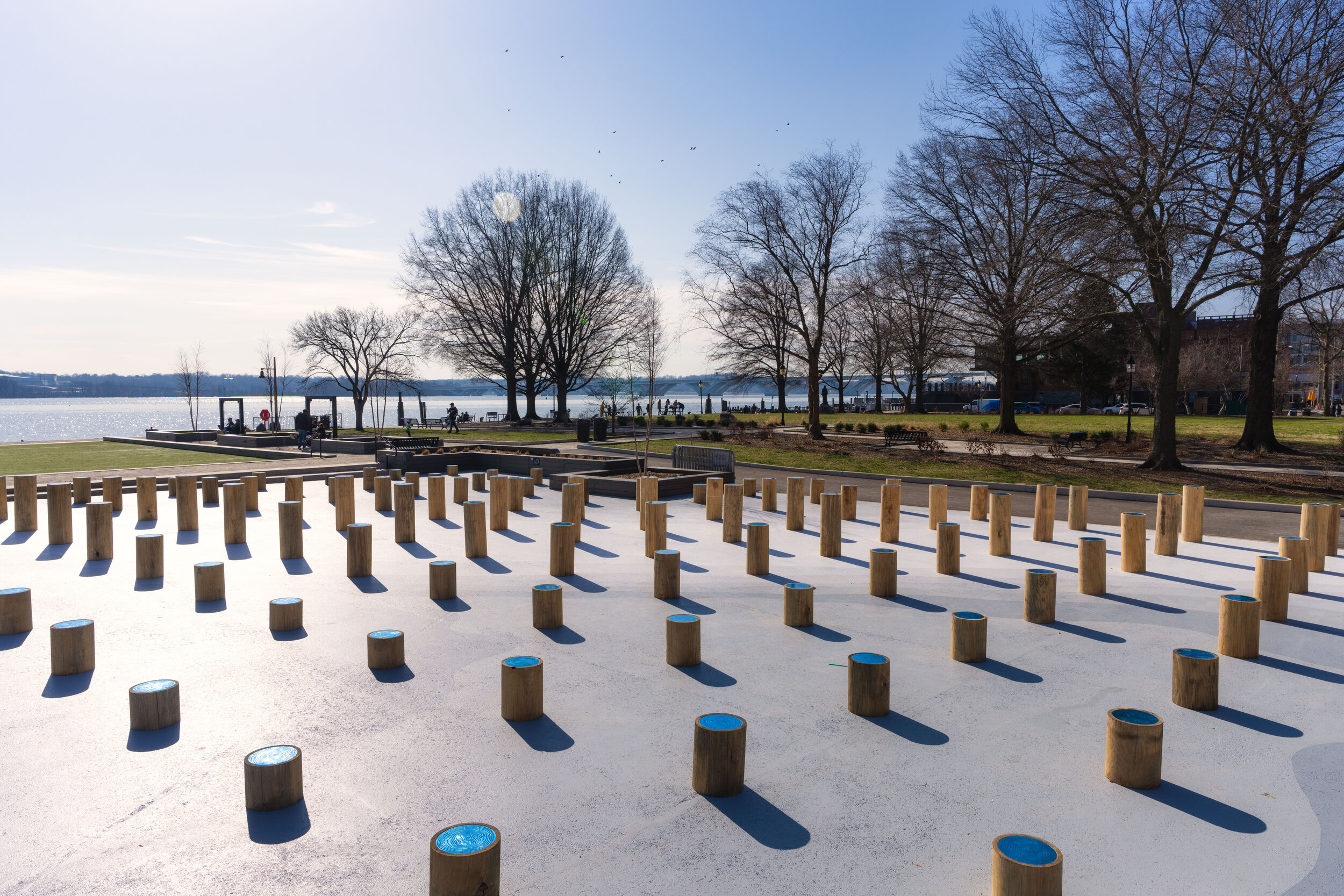
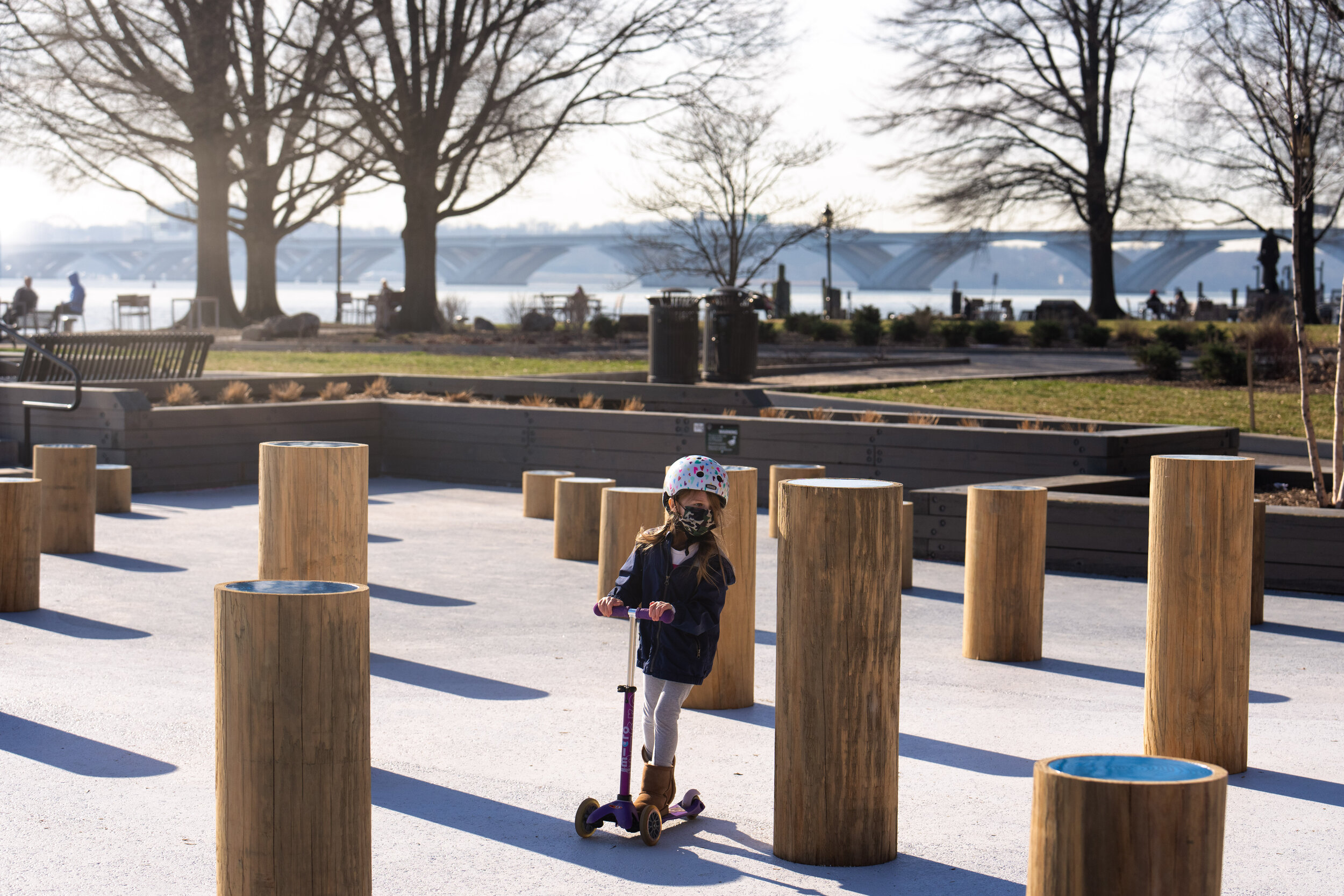
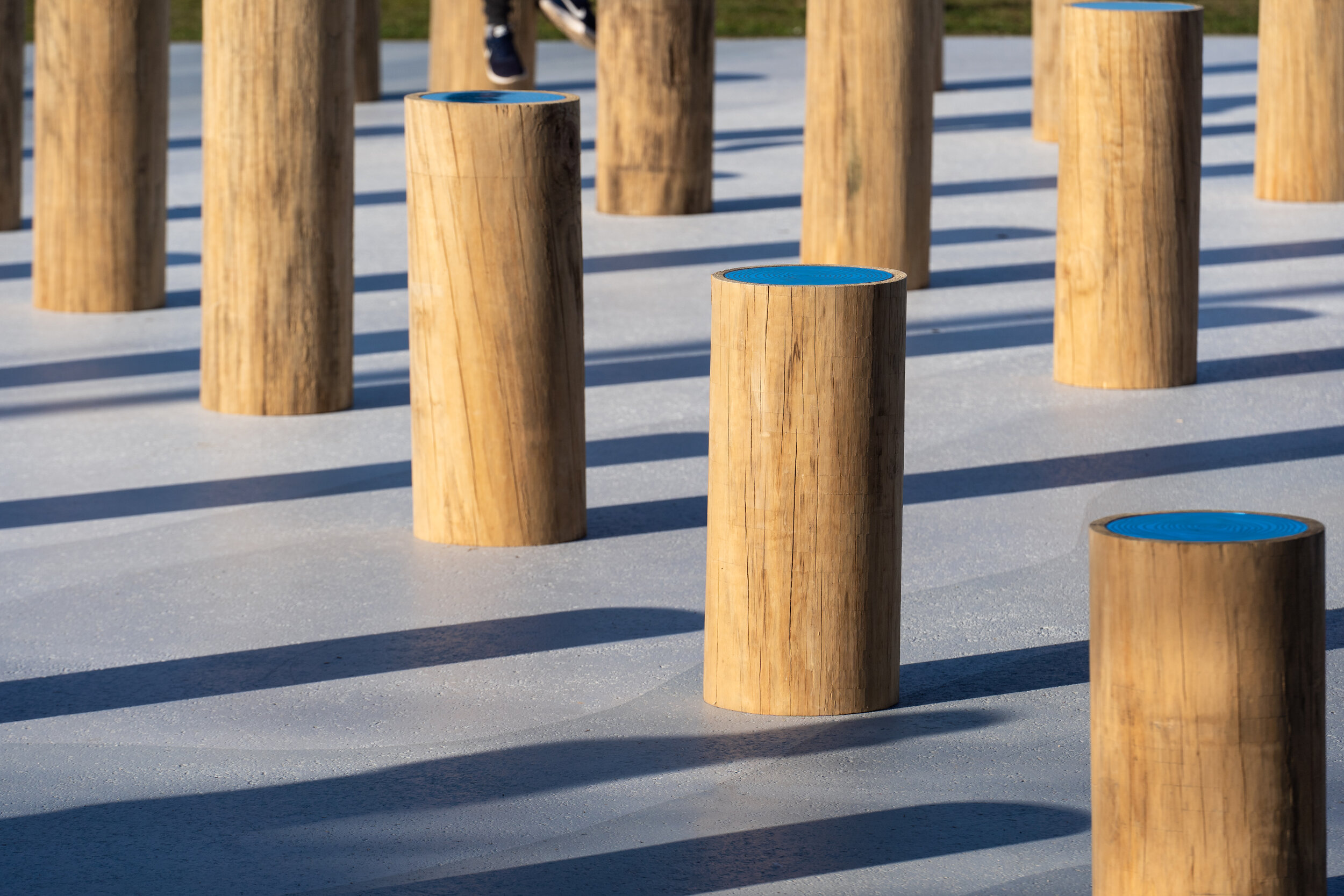
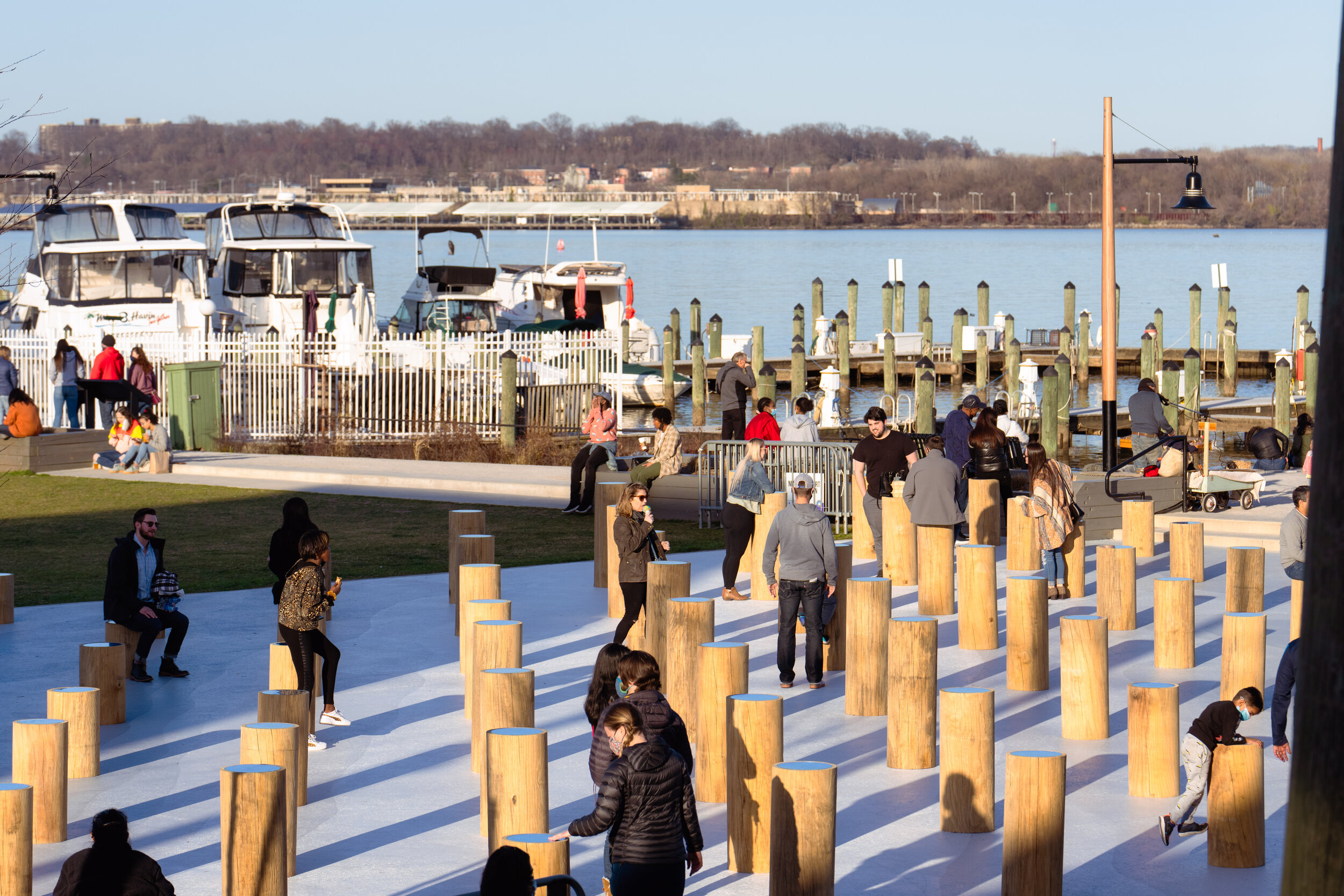
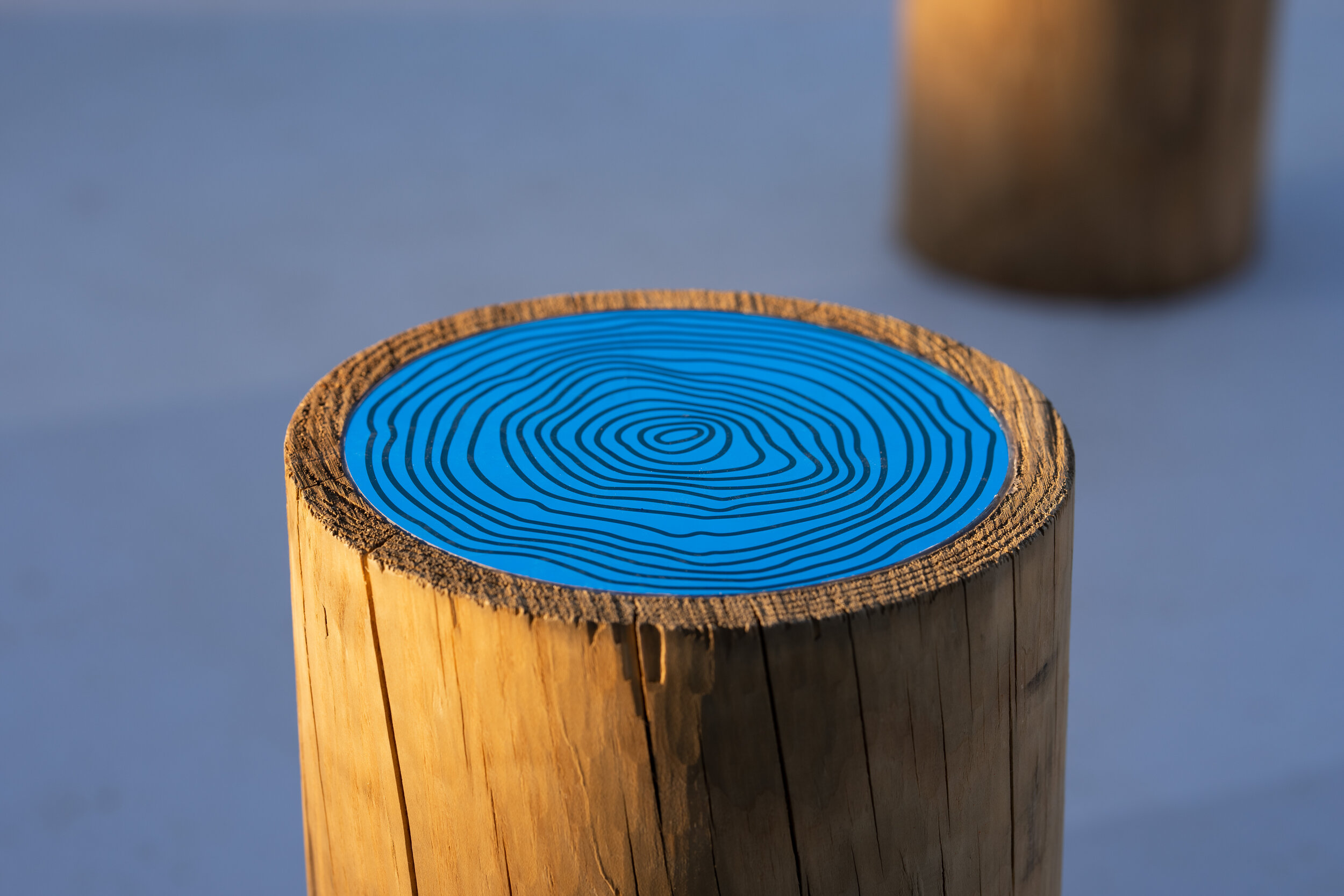
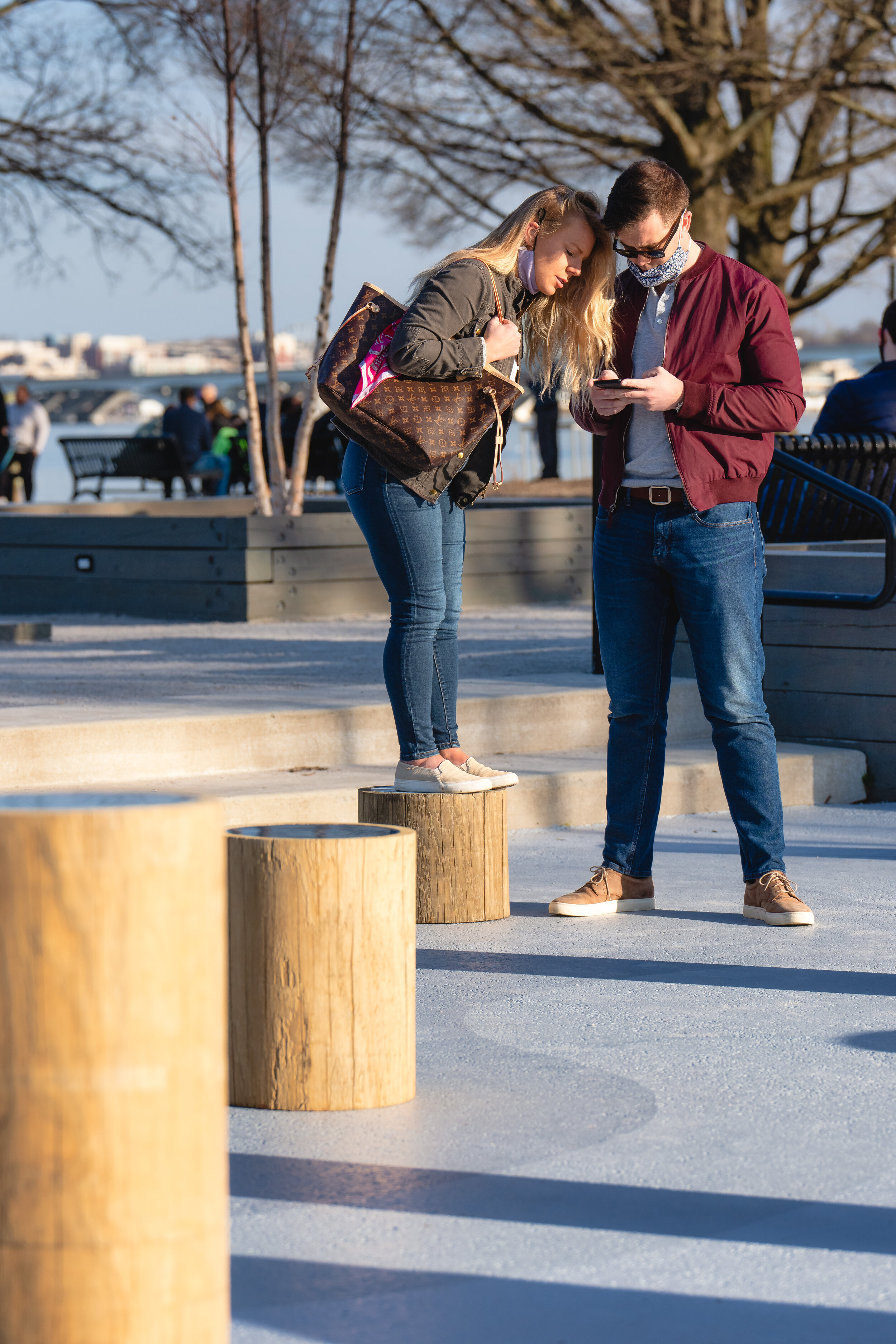
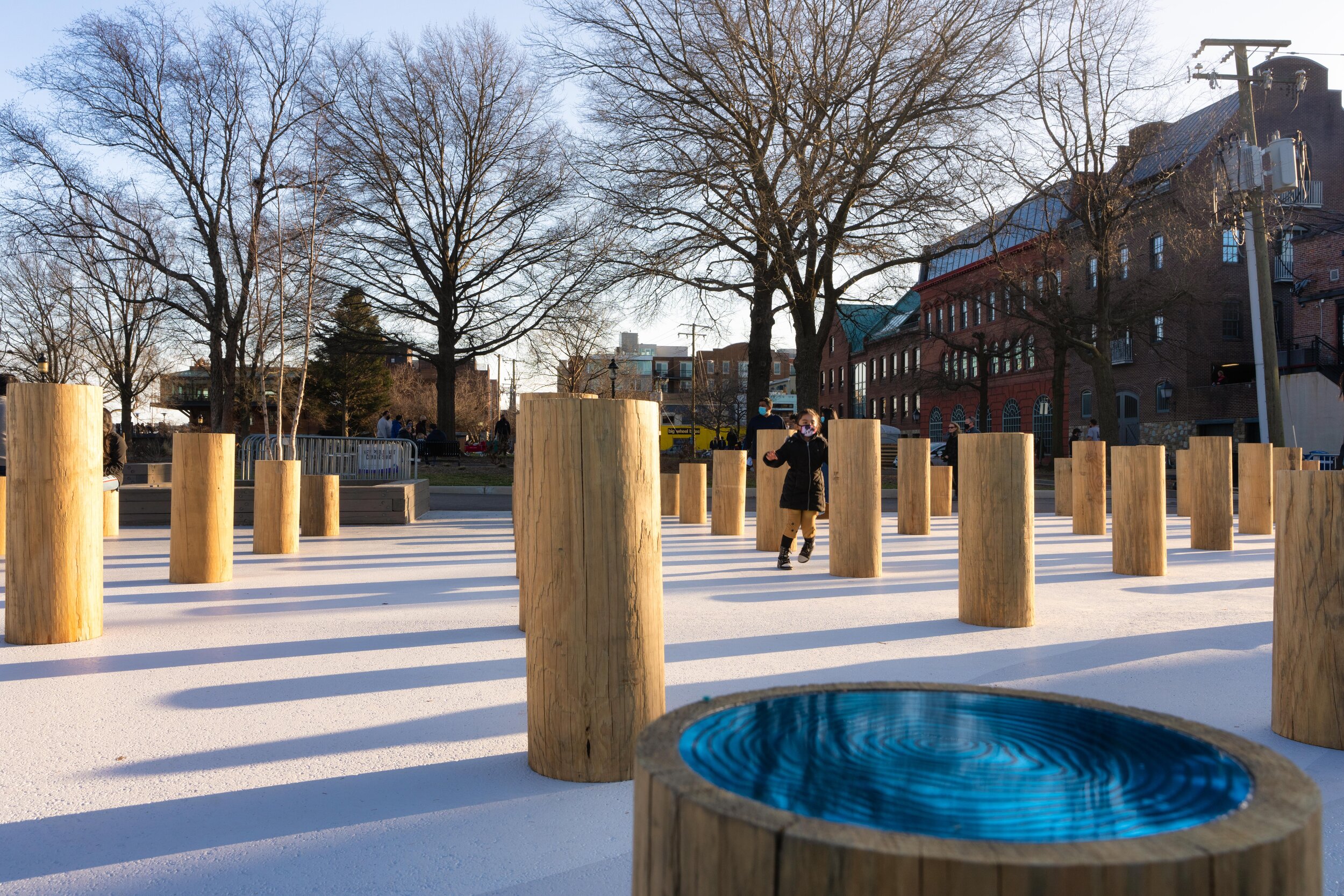
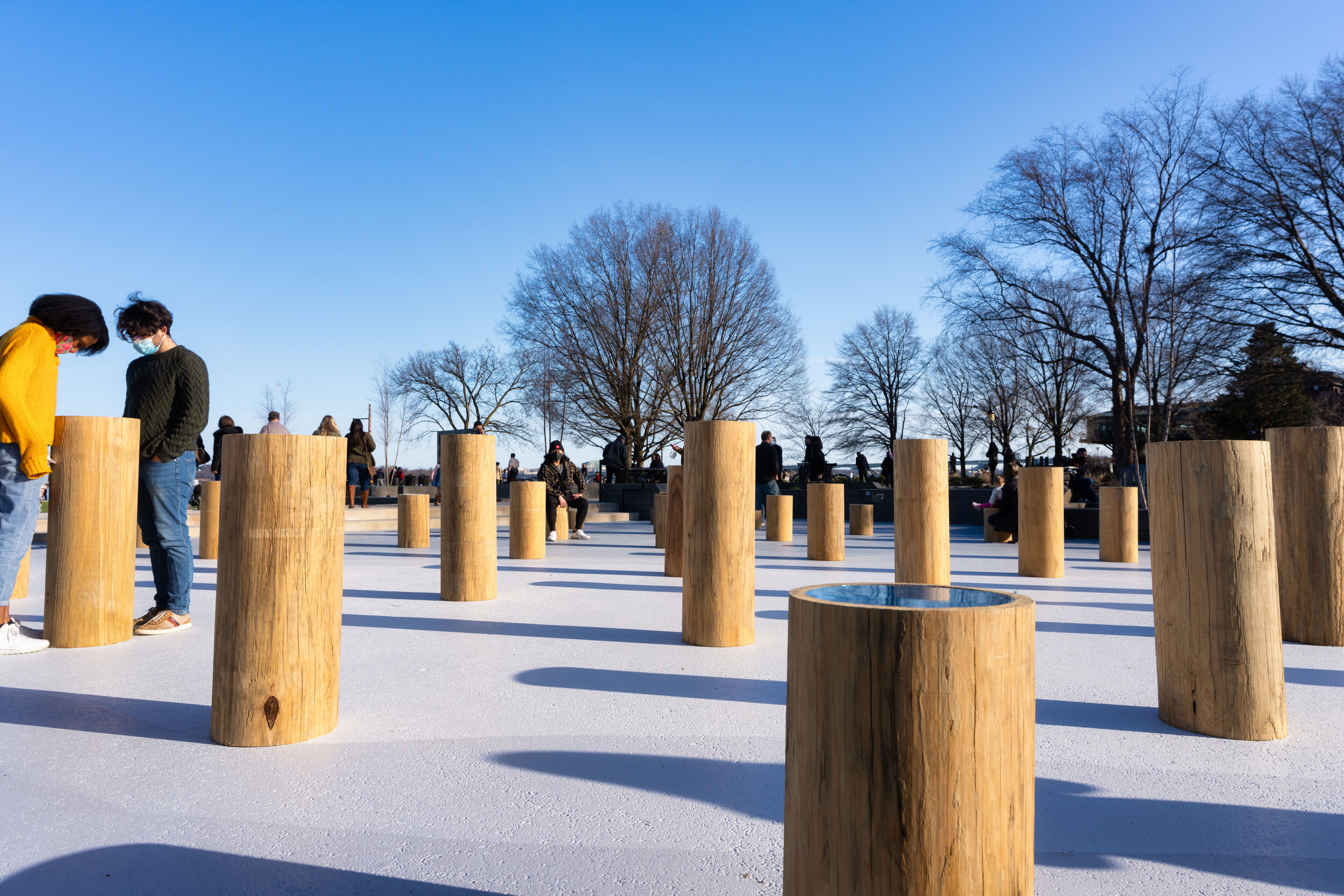

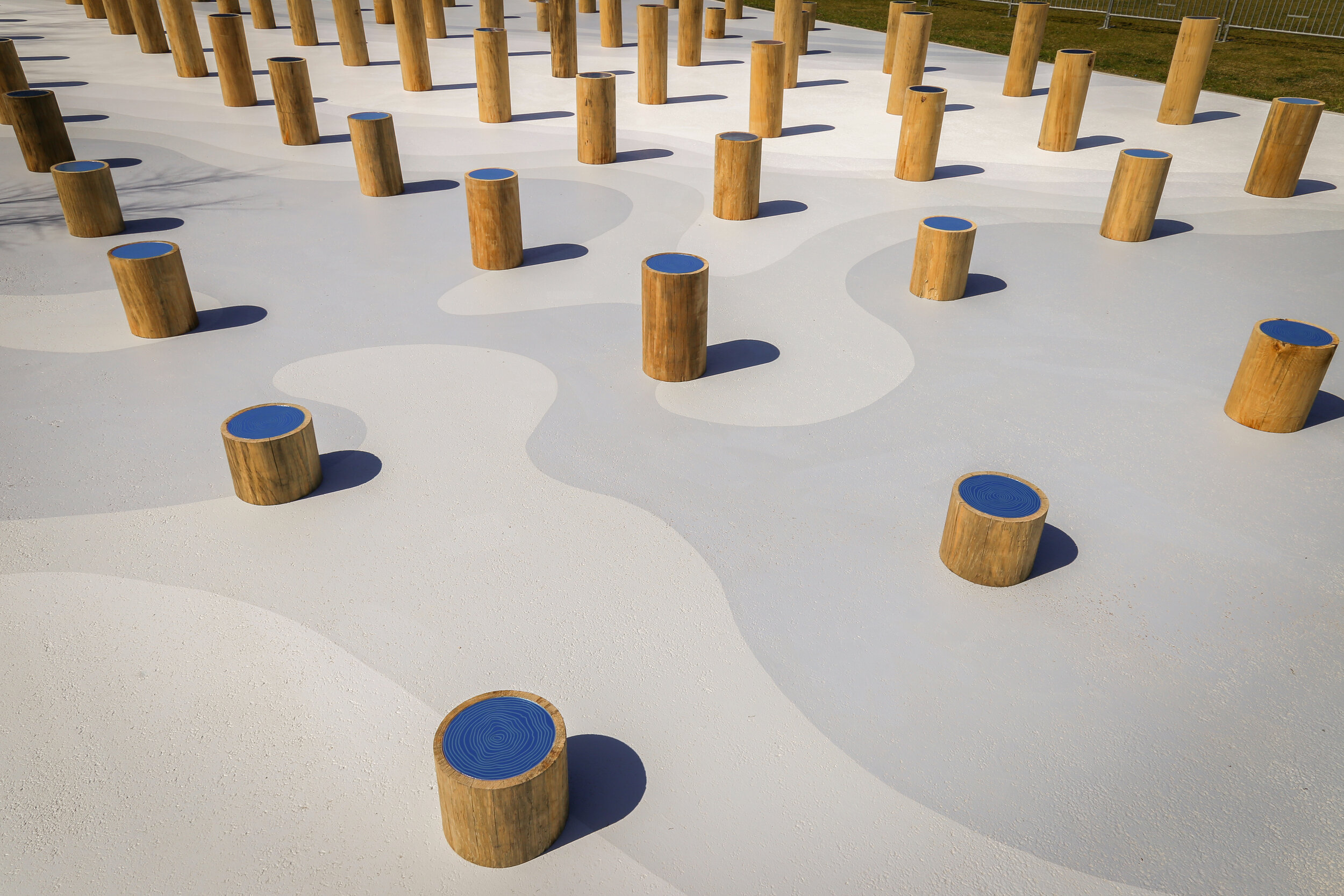
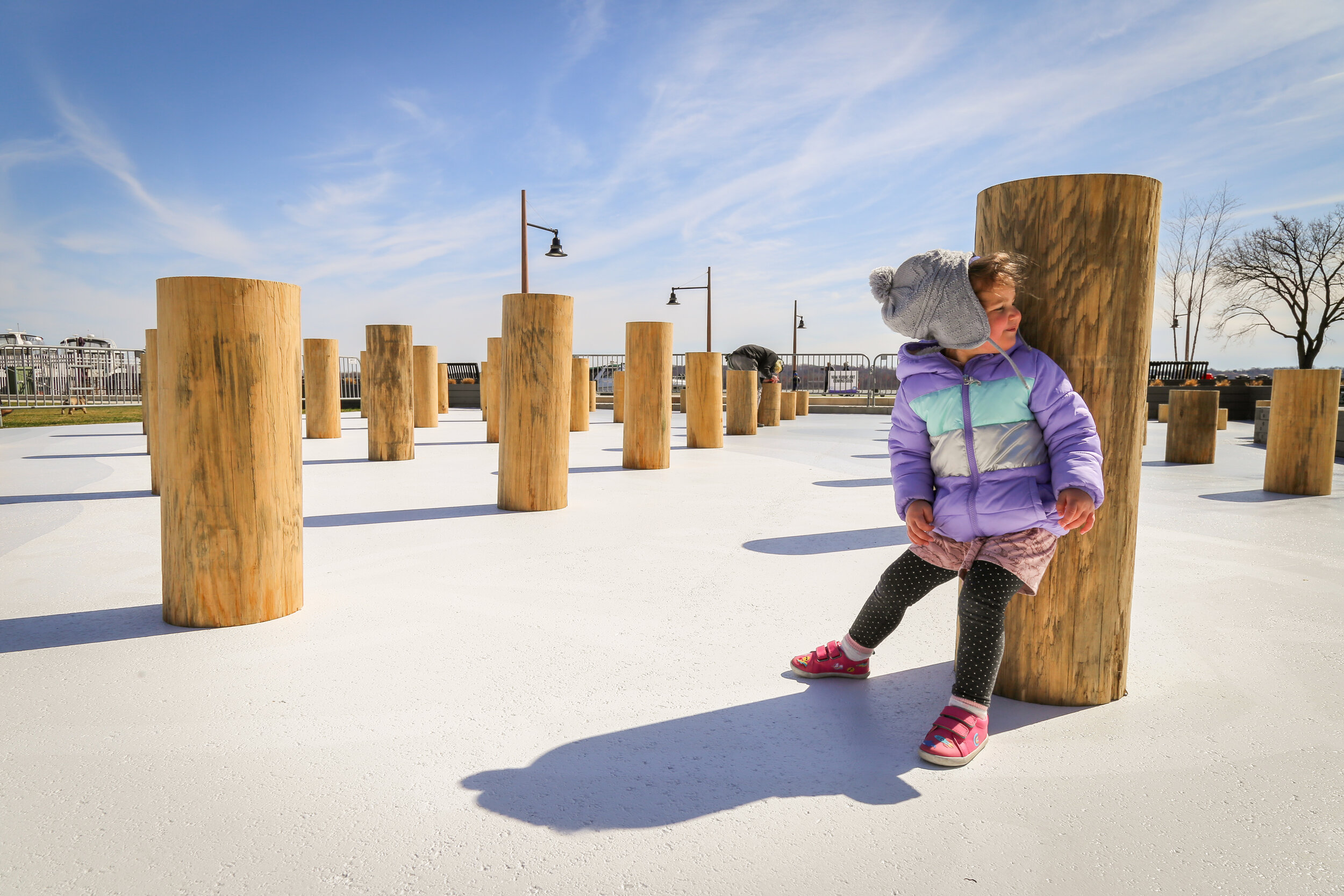
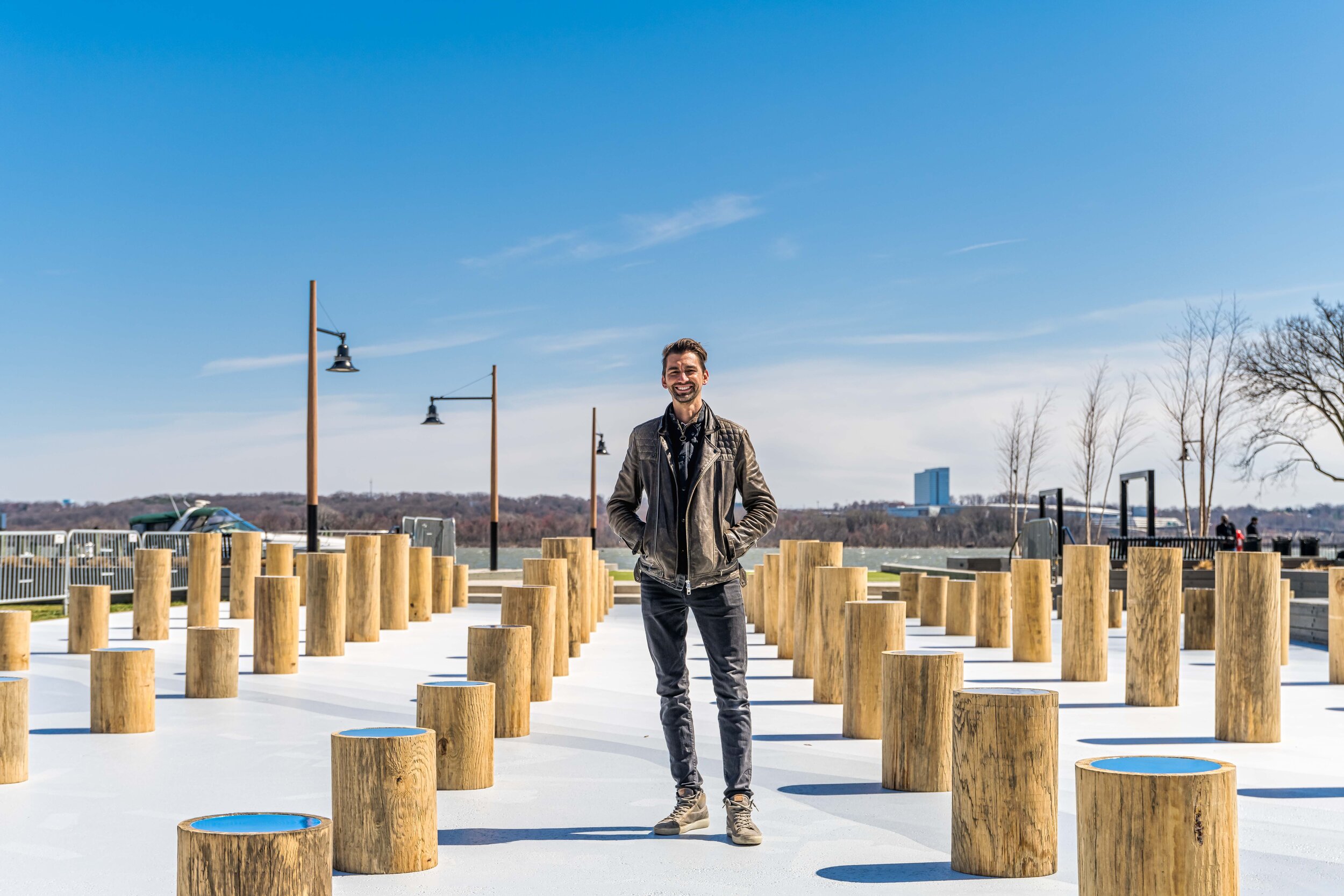
Children’s toys, fossilized biscuits, stamped stoneware, hundreds of shoes. These are a few examples of the items unearthed in excavations along the Alexandria waterfront over the years, demonstrating its role as an ongoing hub of activity and commerce. As such, drastic measures were taken to manipulate Alexandria’s connection to the waterland. In the late 18th century, for example, wooden ships were intentionally sunk in an effort to extend the city’s shoreline. Meanwhile, thousands of timber pilings crept further and further into the Potomac, enacting the shoreline foundation that would shift as the city continued to develop. From a town standing upon lofty banks to one that bled deeper into the river each decade, these pilings created a fluctuating new boundary in the conversation between sea and shore. Groundswell seeks to recontextualize these quintessential maritime objects, pay homage to the space’s rich history, and bring an element of play to the shoreline’s material topography.
From “Pondering Shorelines,” a paper presented at the Society for Historical Archaeology Conference, January 2020 by B. Skolnik: For terrestrial archaeologists working in urban and waterfront settings like Alexandria, the water’s edge frequently represents a boundary that is seemingly fixed, beyond which is figuratively (and sometimes literally) outside of their jurisdiction. However, the water is the connective tissue that linked these port towns in the past and made them viable economic centers. Furthermore, the boundary between land and water cannot be thought of as a static line like it is frequently shown on historic maps. Just as there is topography on the land that shapes human activity, there is topography (or bathymetry) under the water that shapes human activity.
Groundswell will consist of over 100 14” diameter raw wood pilings ranging in height from 12-42,” each topped with a cobalt-mirror surface. The pilings’ undulating profile is determined by the topographical map illustrated in the floor mural, which is derived from the contours of the adjacent Potomac River. The mirror tops on Groundswell’s pilings shimmer in the light like water, mimicking the unfixed shoreline and reflecting different angles of the sky and faces of passersby. Etched into the surface of the shimmering blue acrylic mirrors are growth rings, which point to the passing of time and the ever-shifting waterfront boundary. Groundswell’s immersive orientation encourages visitors to navigate through the pilings’ grid-like ecosystem, considering their place in the city’s history at this moment in time.

